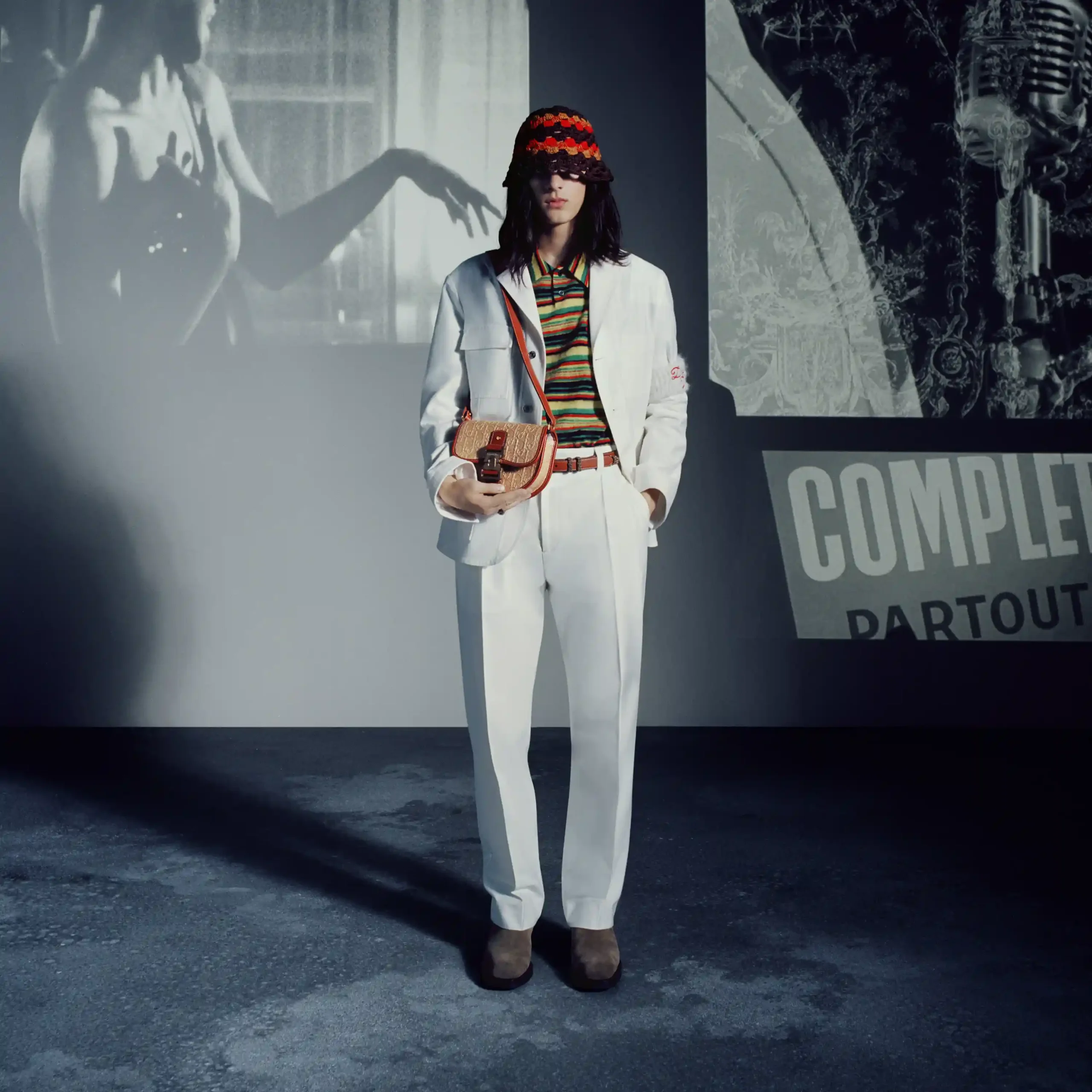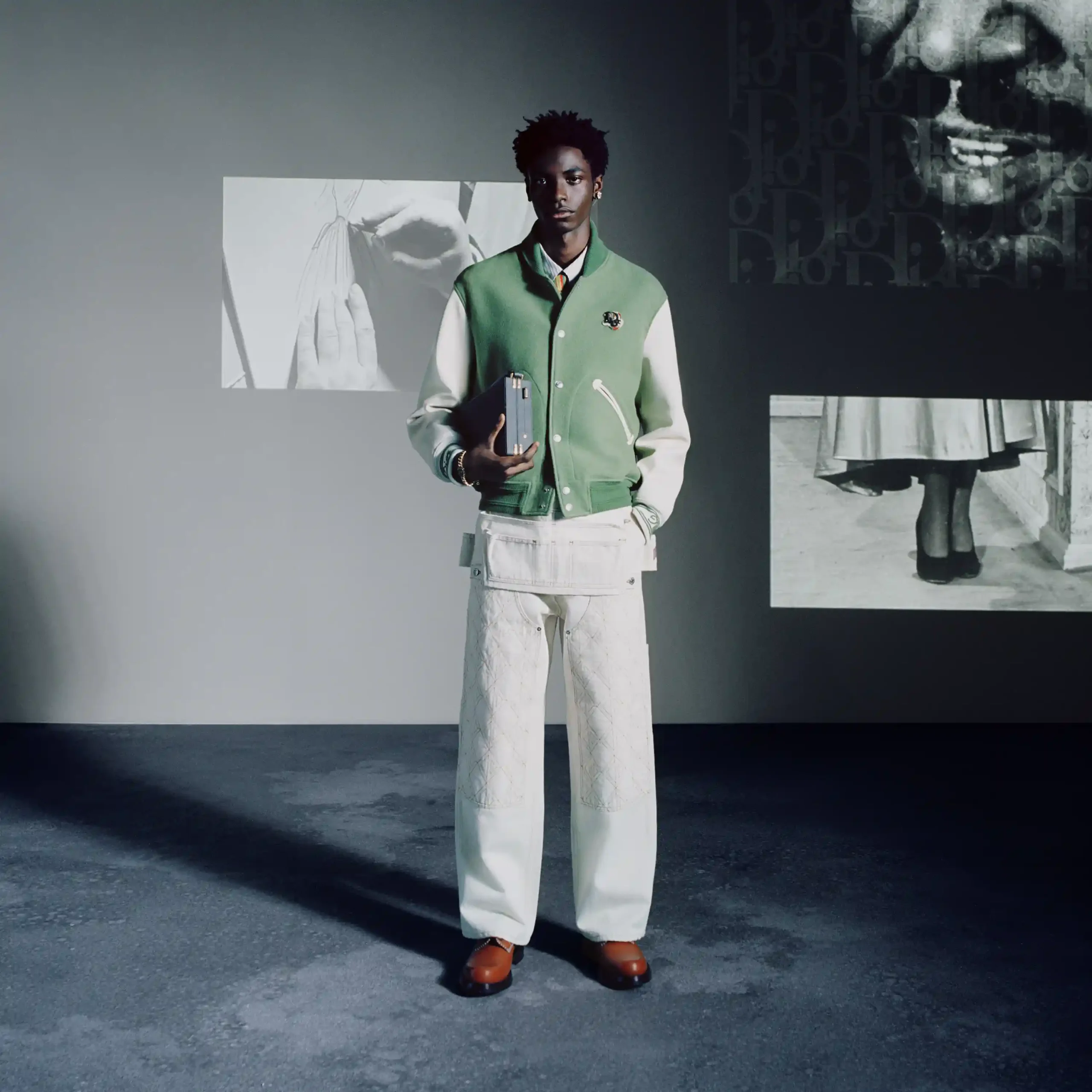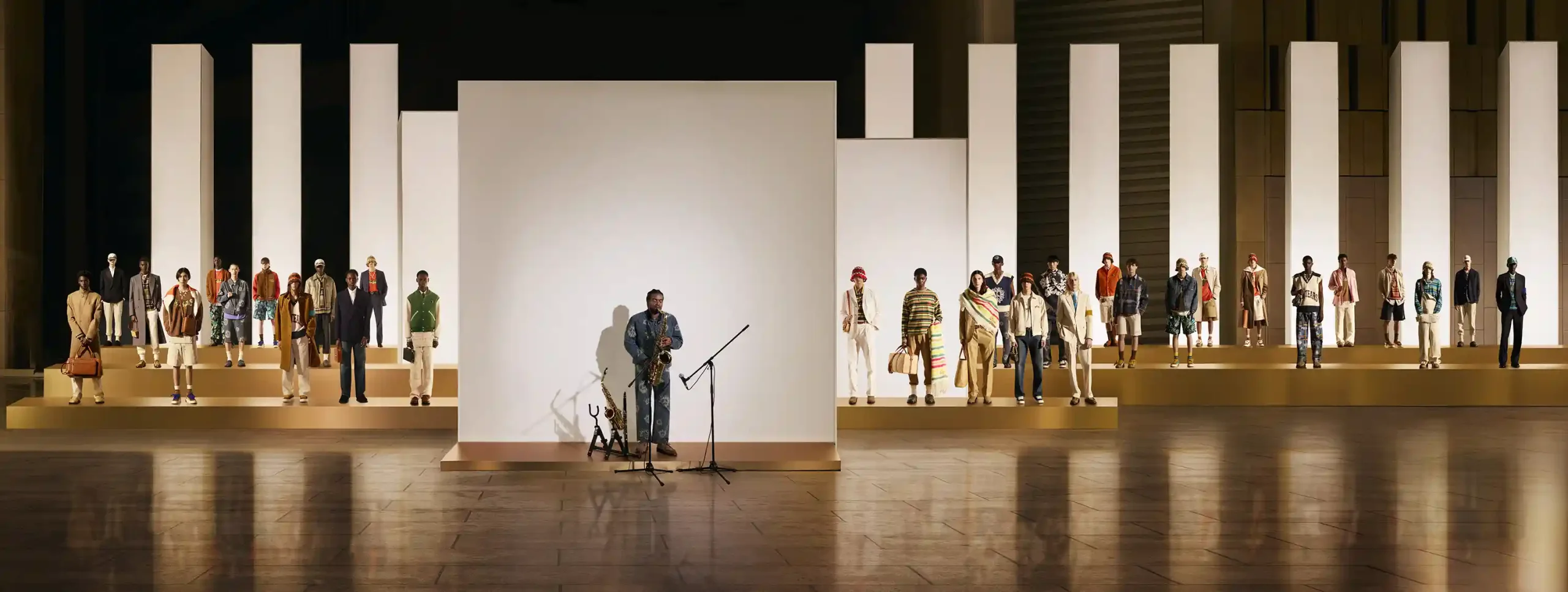DIOR Men, Fall 2023 The Tears Collection
“I want to share that moment in time, that beautiful moment in time where black writers and musicians and artists were coming from america, running from america, and finding some level of acceptance in certain european cities and being able to have their art respected and who they are respected. It wasn’t perfect but it was just a moment, a beautiful moment for blacks to have the privilege and opportunity to escape from the terror, the horrors of america, a segregated jim crow america. Artists like miles davis and writers like james baldwin found refuge in paris.”
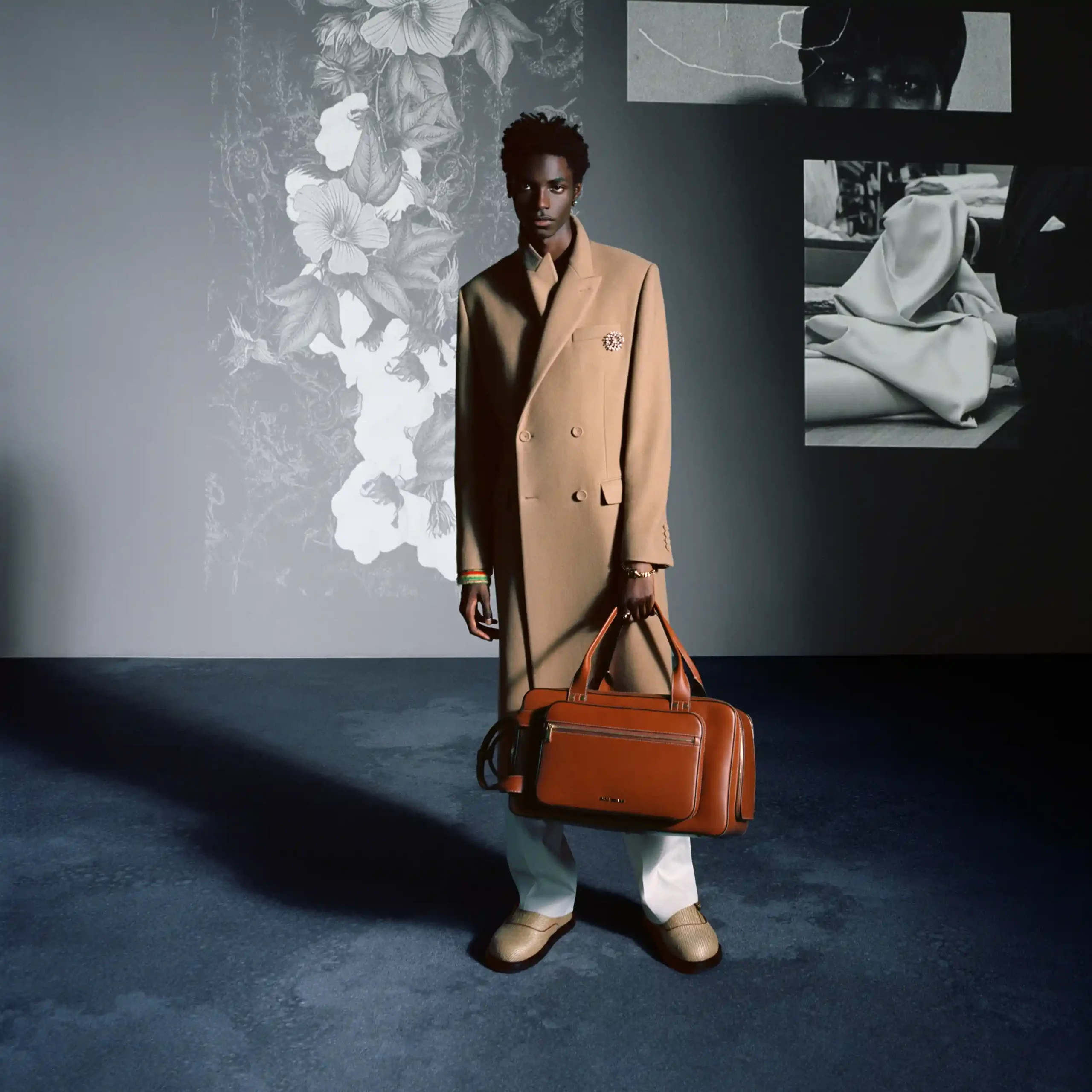
The dior tears collection includes Tremaine Emory’s A Journey of Jazz: A Dialogue between New York and Paris via New Orleans. The line, which was created by Tremaine Emory, the founder and developer of Denim Tears, combines the exquisite and the eccentric, the casual and the classic. According to his longtime friend Kim Jones, Emory is a designer who combines French high savoir-faire with a concept of the American ideal.
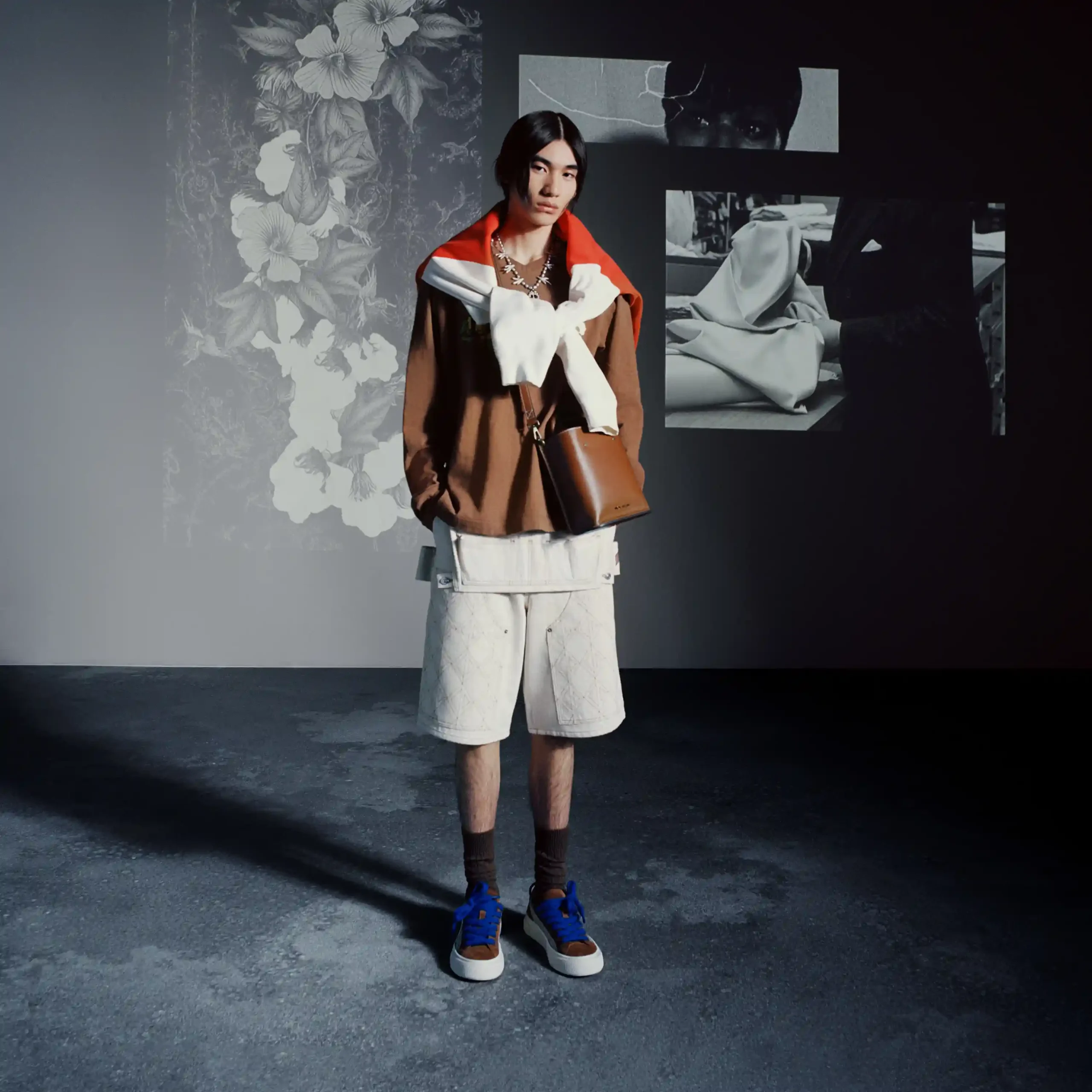
The fabric’s origins may be French after all, deriving from “serge de nimes,” and the dior tears collection continues to use denim as its foundation. Special jacquards and discharge designs have been devised and added to traditional fabrications, and fifties silhouettes have been kept. As the expertise of the Dior atelier permeates everything, a stylish sensibility is enhanced. A blending and cross-fertilization of fashion and cultural codes in the collection reflects the movement and impact of the great African-American jazz artists who traveled to Europe to play. Here, American homespun meets French fine craft. They were moved by what they discovered in Paris, and they in turn served as an inspiration for the city, advancing its avant-garde culture. The collection’s own beginnings reflect this.
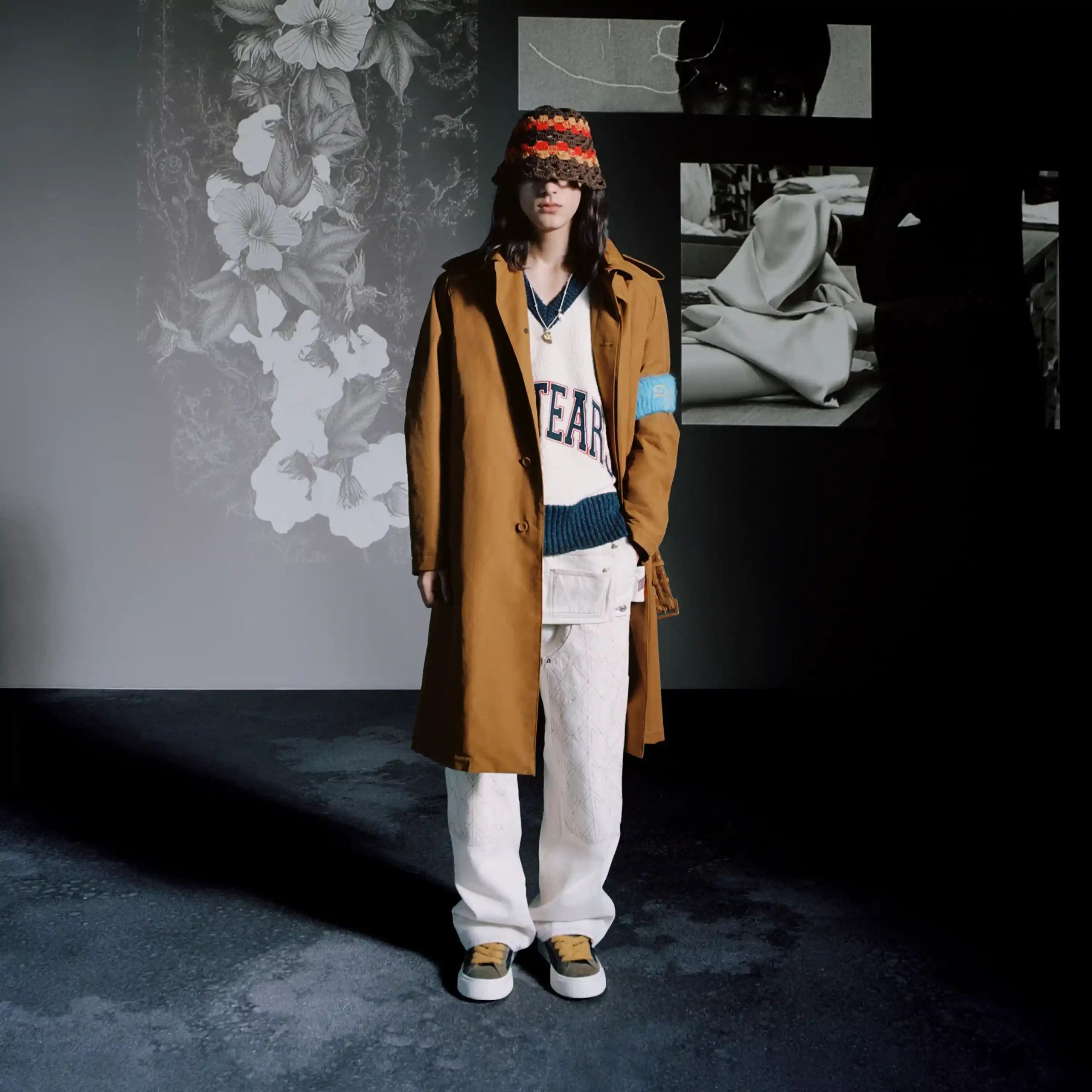
The collection was heavily influenced by the insouciant jazz artists of the 1950s and 1960s as well as the appearance of black ivy league students in those years. Moreover, there is a tribute to the concurrent civil rights movement, where workwear was also worn. Here, preppy meets the origins of “cool” through the workplace in classic American clothing like unpretentious plaid shirts, durable varsity jackets, and casual chinos combined with the sartorial sexiness of classic wool overcoats, sinuous tailored suiting, and elegant cognac leather accessories, like the trumpet bag.
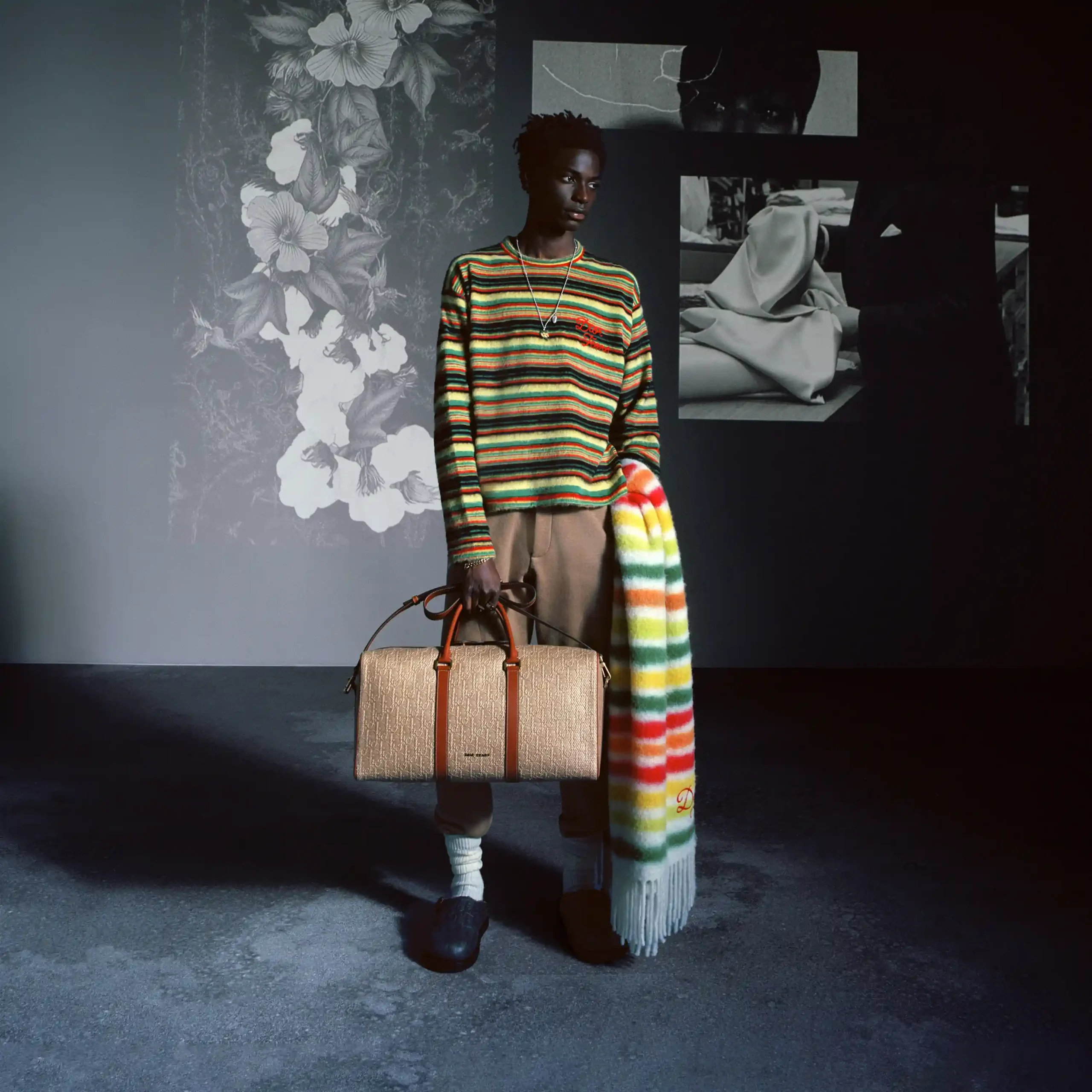
The collection is a microcosm of denim tears and the society it inhabits in many ways. Emory’s collections focus specifically on the experiences of the African diaspora in the United States of America. Dior Tears also includes a talk with France in this discussion. These issues are reflected in this collection’s general narrative as well as in signs, symbols, and themes like collard greens and cotton blossoms. It has particular resonance for Tremaine Emory, an African-American who was raised in New York City after being born in the rural south of the United States.

Jazz’s rich history, which has its origins in Africa, has had a profound impact on society. So, it is appropriate that the collection be displayed in Egypt, at one of the sites of a civilisation that had a profound impact on the world. It is displayed as a “tableau vivant” in the grand egyptian museum alongside artifacts from one of history’s greatest civilizations.
